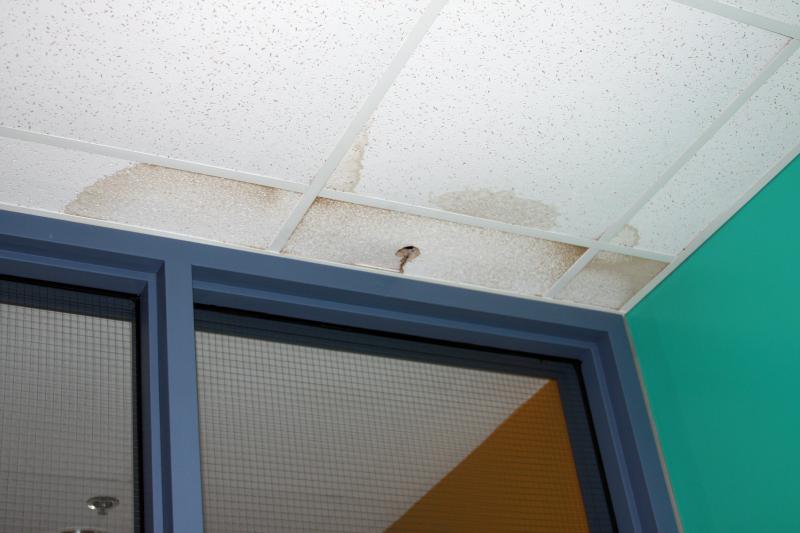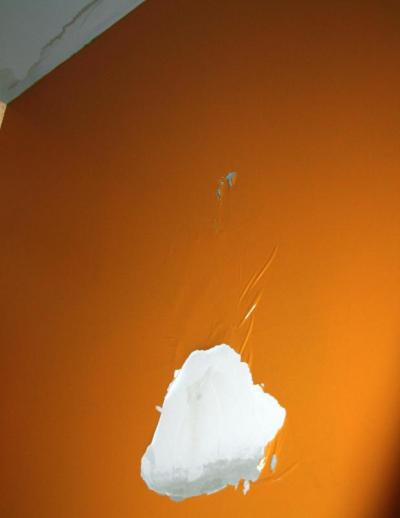Voters to consider funding study for Wareham High roof fix
Basketball games are no longer rained out in Wareham High School's gym after Town Meeting voters approved funds to replace its roof last year, but the situation isn't much better in the rest of the building, and administrators hope voters in October will fund a study that will pave the way for the school to receive a 68% reimbursement for the remaining roof replacement.
"If we don't deal with the problem now, we're going to have to deal with the mold" in the areas where the roof leaks, Principal Scott Palladino explained. "Any time there's mold, there's a whole remediation process ... and it's expensive." And after remediating the mold, the principal points out, "you still haven't fixed the roof."
A walk through the school's hallways and classrooms reveals water stains on walls, chipped, peeling, and bubbling paint, and cracked ceiling tiles. Palladino says the school is in a futile effort to keep up with the damage.
Walk through on a rainy day and, Palladino says, you'll have to avoid buckets full of water.
Palladino notes the district is lucky, however, that Wareham High School was among one of six schools in the state that the Massachusetts School Building Authority chose over the summer for its "accelerated repair program," which will reimburse districts for 68% of the cost of projects it approves.
The principal says the town "showed good faith" when voters approved the repairs to the gym roof, which likely helped Wareham High get on the list for the accelerated repair program.
The first step to getting a project approved is to complete a "feasibility study," with estimates and plans, which school officials estimate will cost up to $60,000. The School Building Authority will reimburse 68% of the study, so long as the project is approved.
Once the project is approved, Town Meeting voters will have to OK the spending of local dollars for the town's portion of the repair itself.
The price tag for a study may seem high, Palladino admits, but he notes that it pales in comparison to a roof replacement without any reimbursement.
"This is a great opportunity," says Palladino, explaining that the School Building Authority doesn't often offer such programs.
Other agencies have noticed the problem, too.
When the New England Association of School and Colleges (NEASC) performed the school's 10-year accreditation review in late 2011, among its biggest concerns was the state of the school's roof, and said it would have to be fixed in order for the school to retain its accreditation.
Accreditation is a process complete by an independent agency, such as NEASC, to ensure that schools are providing a high-quality education and, therefore, that students' diplomas will be recognized by colleges and future employers.
"This is the big-ticket item" that NEASC required, Palladino said.
The high school opened in 1991. The roof has a rubber membrane that is covered by rocks. When the roof leaks, it is difficult to find the tears, and moving the rocks can potentially make more tears.
"Roofs are good for 20 years," said Palladino. "There's a reason for it."














